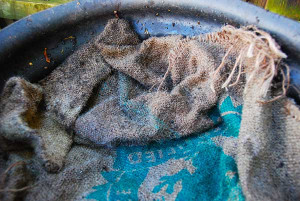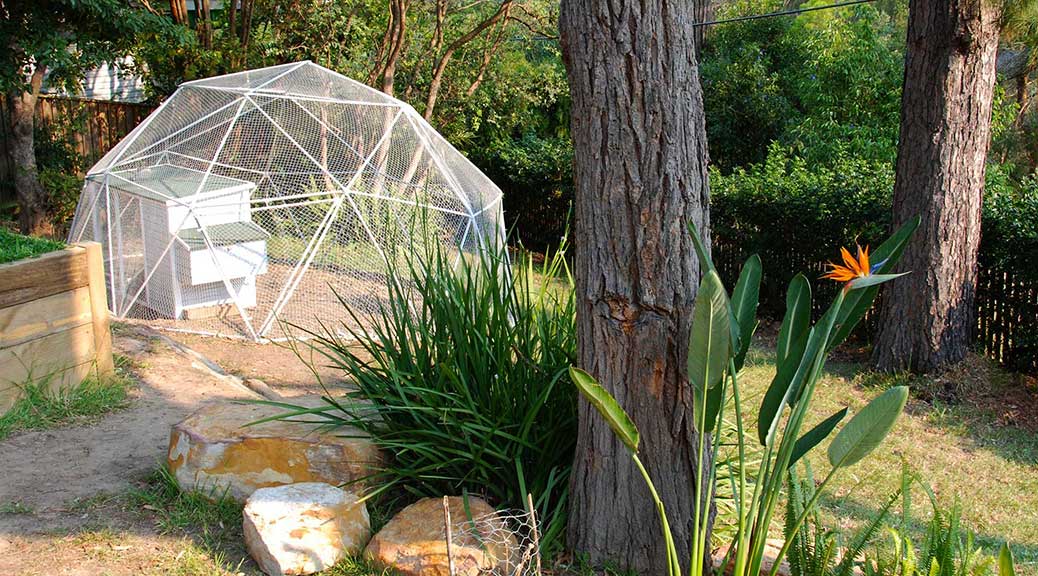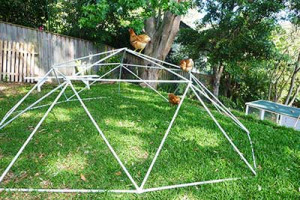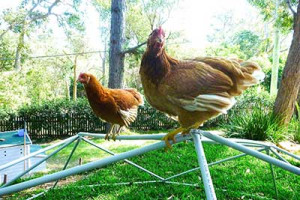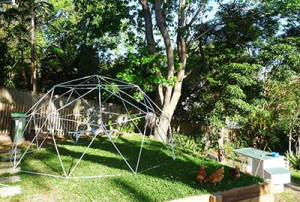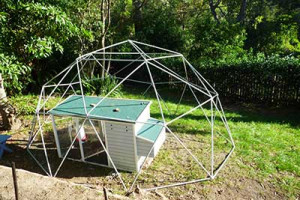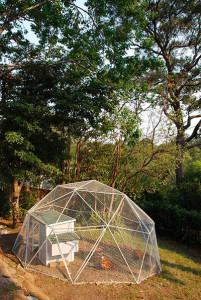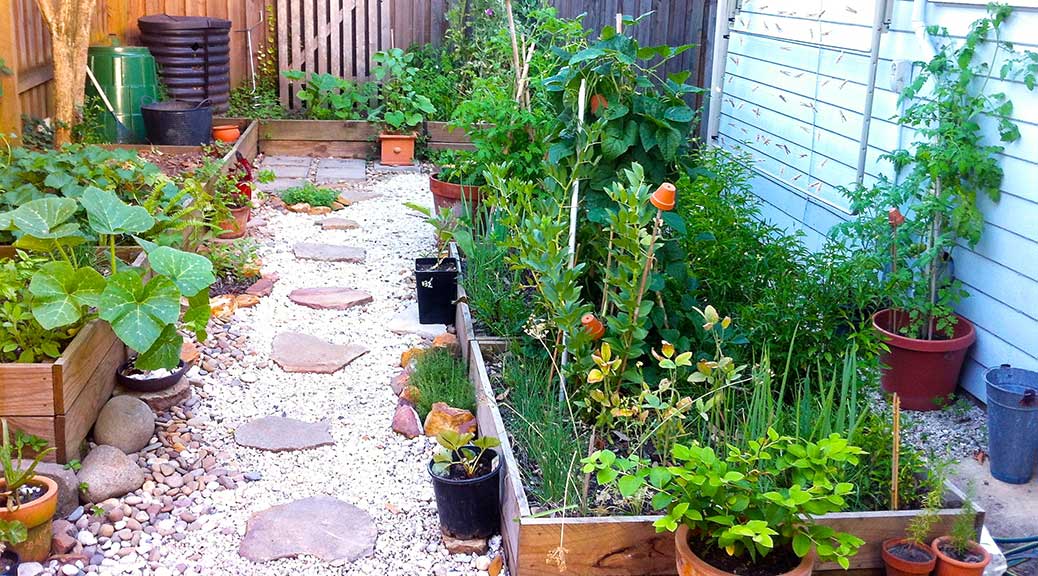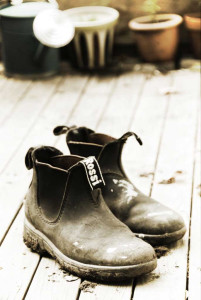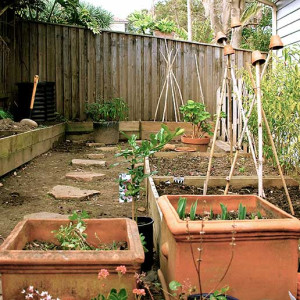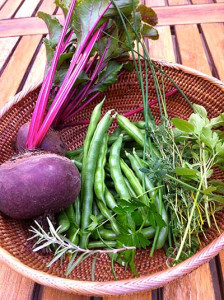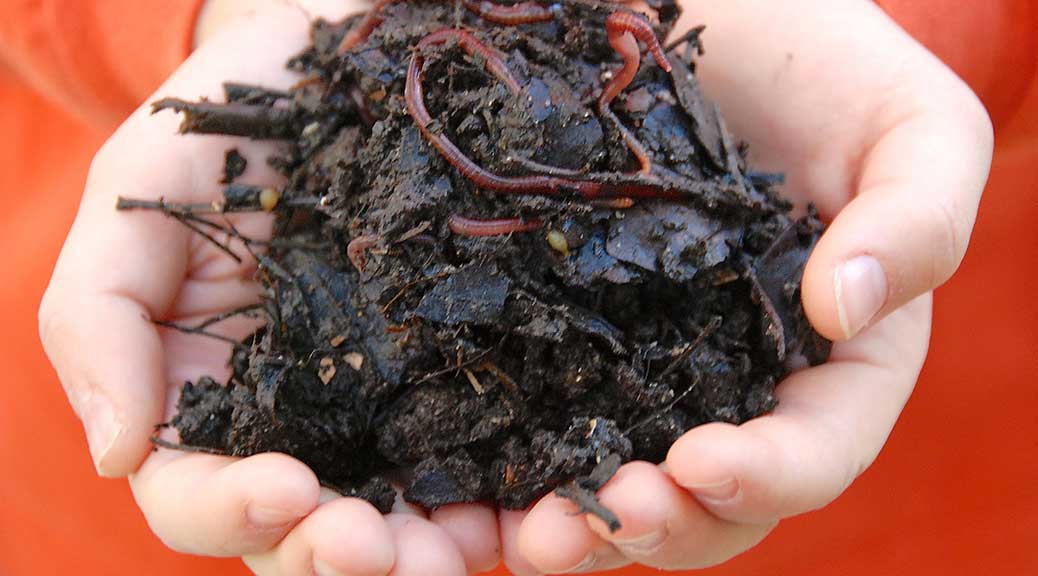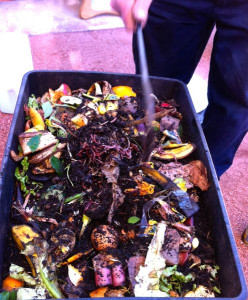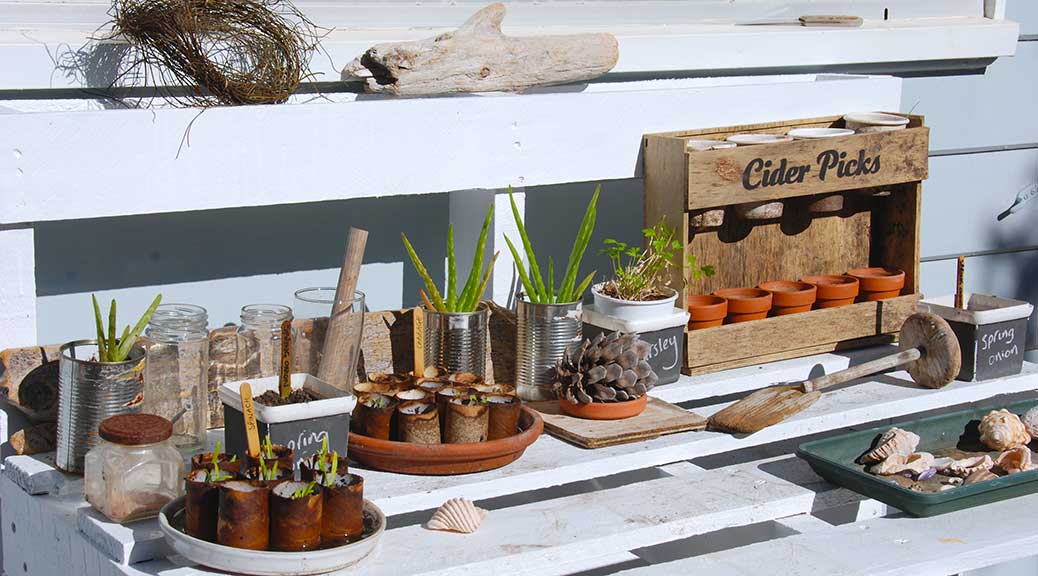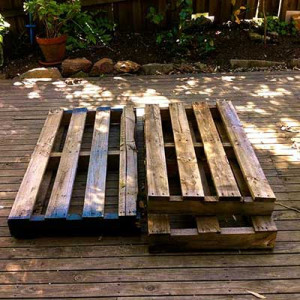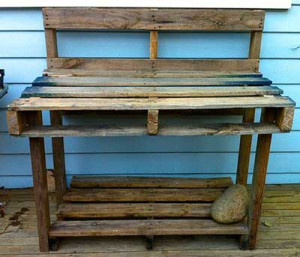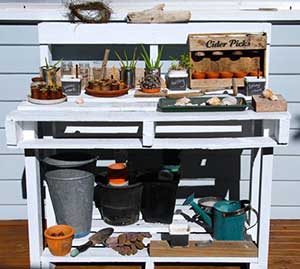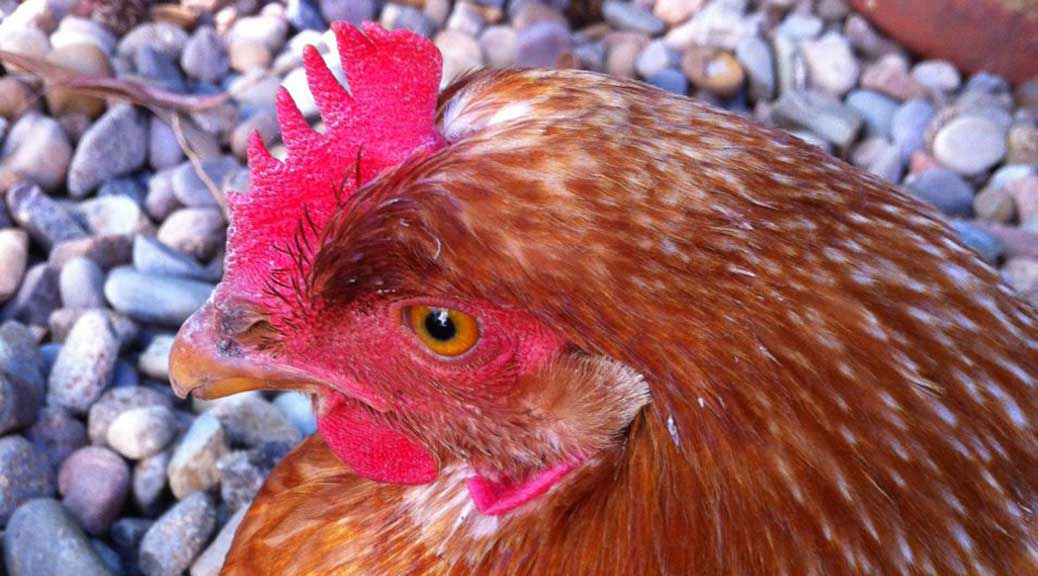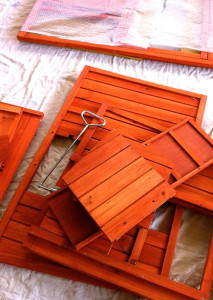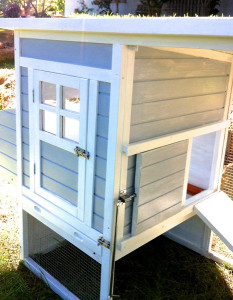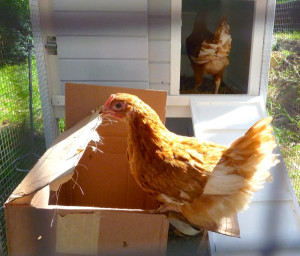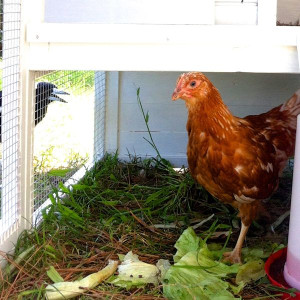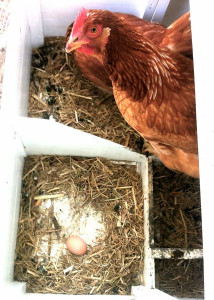The Eco House and Garden, at my local ‘tip’, Kimbriki Resource Recovery Centre, is a fantastic education centre. It comprises a large building/office and edible garden made almost entirely from reused and recycled materials rescued from landfill. From there a team of eco gardeners run various, free, courses on sustainable gardening practices. Last year I attended ‘The Art of Composting’ course.
After previous failures and frustrations with composting, I am now managing successfully to produce usable compost from our kitchen and garden waste. I am not, by any means, claiming to be an expert; however, I hope I can help and inspire others to give composting a go. These are the best 7 tips I learnt, enabling me to produce compost efficiently and quickly in a compost bin.
1. Cut up your waste
The smaller the pieces of waste, the quicker they can breakdown. This includes both garden cuttings and kitchen waste. It doesn’t take too long to cut and makes such a difference. I have discovered that certain scraps take much longer than others to breakdown, these include citrus peel and egg shells. I cut up peel into small pieces before putting it in, and I crush egg shells up into tiny pieces.
2. Add worms
My neighbour gave me some worms from his compost bin, but I also discovered that when I started a second compost bin the worms just appeared. (If you build it they will come?) The worms help breakdown the waste and are an essential part to successful composting, so if you don’t have any, you need to get some. You only need a few as they breed very quickly. Apparently they stop reproducing when there are enough worms for the space they have, so it isn’t possible to become overpopulated with worms. Clever fascinating creatures! A quick internet search for ‘composting worms’ will help you buy worms (apparently they can be sent by mail – amazing!) so if you are not lucky enough to have an obliging composting friend or neighbour, this might be the way to go.
3. Add equal amounts of ‘green’ and ‘brown’ waste
I keep a pile of dry leaves next to the compost bin so whenever I chuck in my kitchen scraps I add the same amount of leaves. If you put in too much of one type of carbon (eg grass cuttings) it doesn’t breakdown as well and can get smelly; a good balance is really important.
4. Diversity is the key to a good compost recipe
Adding a diverse amount of materials into the compost bin means the compost will contain more nutrients. Egg shells are good for adding calcium, but you may not realise that you can put human hair and nail clippings into the compost bin. Animal manure is also good, I put our chicken droppings in when I clean out their coop, and I often add some cow manure (which can usually be bought from garden centres).
5. Keep it moist
Compost needs to be kept moist to remain active and for the worms to stay alive. I usually add a watering can of water every time I top up with waste.
6. Turn your compost regularly
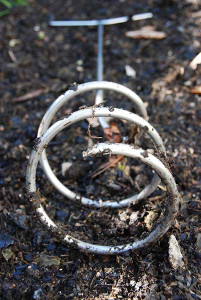
I used to ‘layer’ the different waste and occasionally empty the bin and ‘turn’ the compost with a spade before putting it back in. This was hard work, time-consuming and I didn’t do it often enough. The best, and by far the most useful, tip that I got from the course was to buy and use this compost turner. Turning and aerating the compost is one of the most important jobs, and should be done at least once a week. This brilliantly designed turner makes the job easy and quick. It can reach down to the bottom of the compost to really give it all a thorough mix. The team at Kimbriki Eco House make and sell these stainless steel ones. They have a stall at my local farmer’s market, where they give free advice to help inspire people. They also sell the turners and a few other useful composting and gardening supplies. I know that hardware shops sell a similar compost turner, which would probably work fine, but it may be made from a softer metal and may bend out of shape. 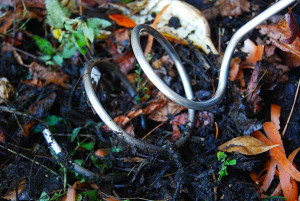 I have no idea if these turners are sold outside of Australia; there are probably some similar ones out there. If you can’t find one, perhaps try asking a blacksmith to make you one! There is no comparison between this and a spade.
I have no idea if these turners are sold outside of Australia; there are probably some similar ones out there. If you can’t find one, perhaps try asking a blacksmith to make you one! There is no comparison between this and a spade.
7. Keep your compost covered
Your compost bin should be sealed with a lid, to stop unwanted predators, such as rats, from getting in. If you find they are burrowing in from underneath you may need to place your bin on concrete, or place a metal sheet at the bottom. To help keep it dark and moist (which also keeps the worms happy) it is a good idea to place some cloth material on top of the compost. I use old hessian sacks which I can buy from my local garden centre. But and old tea towel or old cotton jumper would work just as well. Be warned though, they will eventually need replacing, as the worms enjoy munching their way through them too!
Good luck with your composting and please let me know if any of these tips have helped you.
More composting stories coming soon!
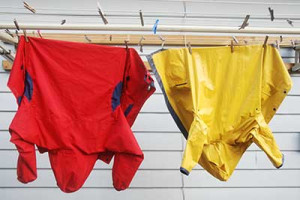
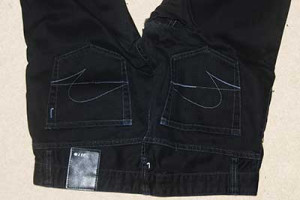
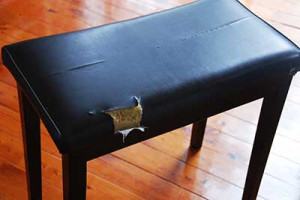
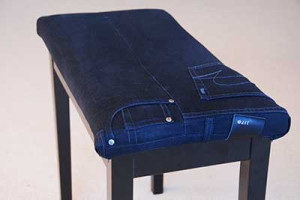


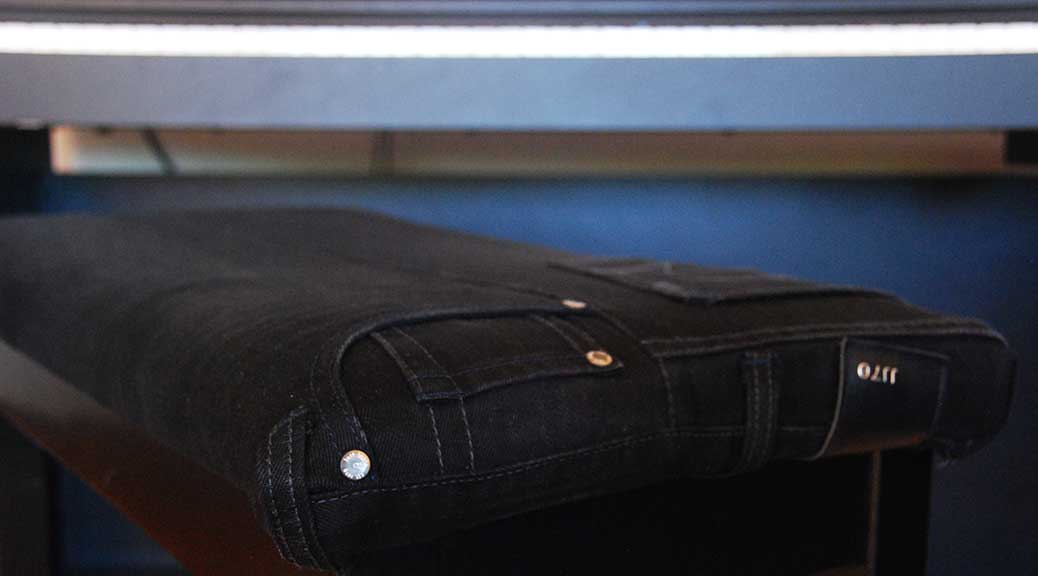
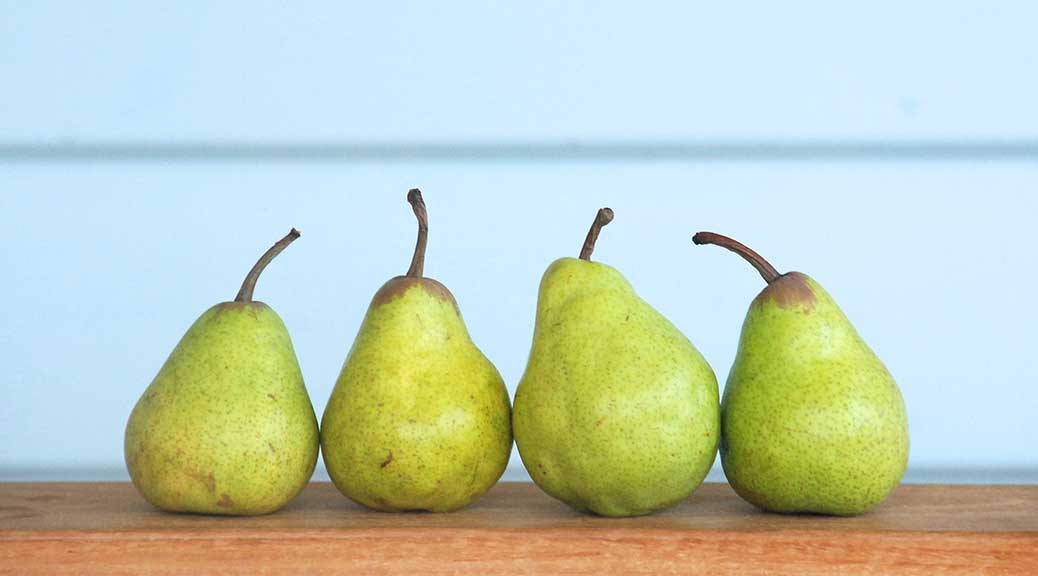
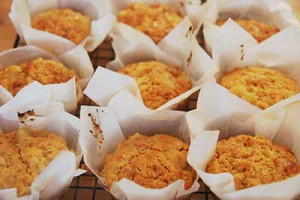
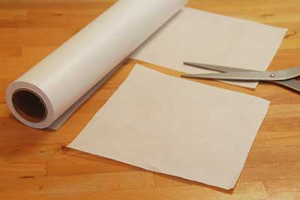
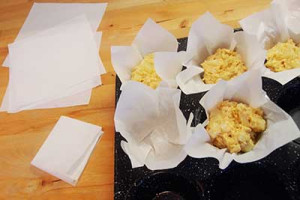
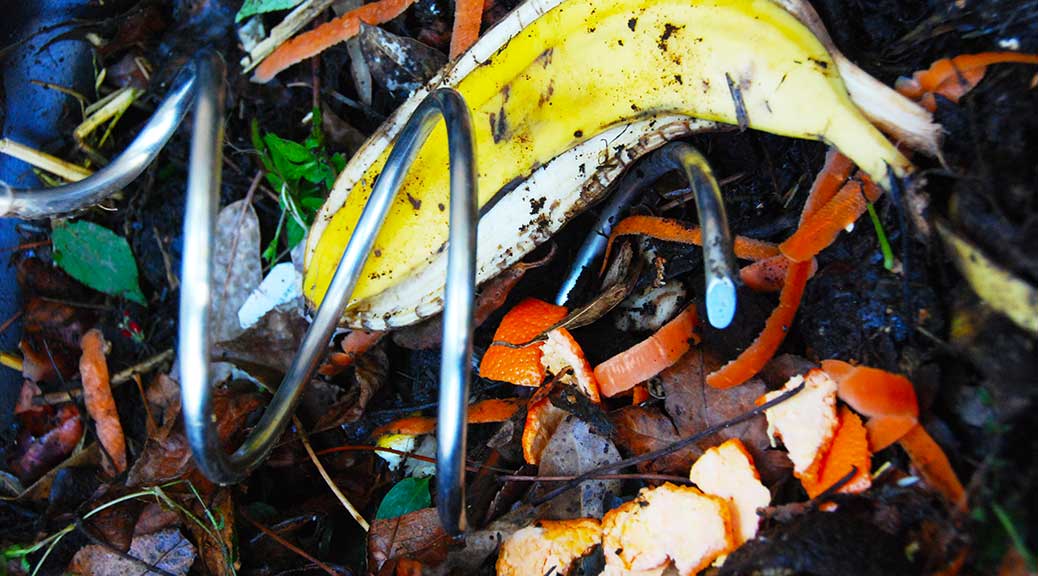
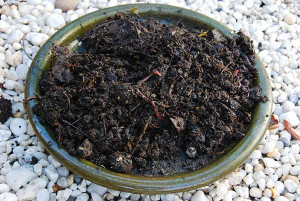
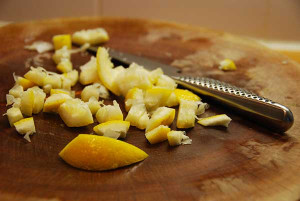
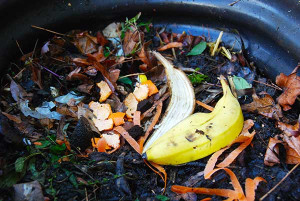
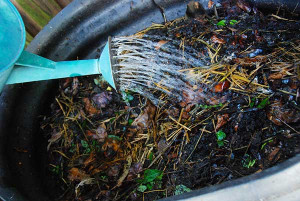

 I have no idea if these turners are sold outside of Australia; there are probably some similar ones out there. If you can’t find one, perhaps try asking a blacksmith to make you one! There is no comparison between this and a spade.
I have no idea if these turners are sold outside of Australia; there are probably some similar ones out there. If you can’t find one, perhaps try asking a blacksmith to make you one! There is no comparison between this and a spade.